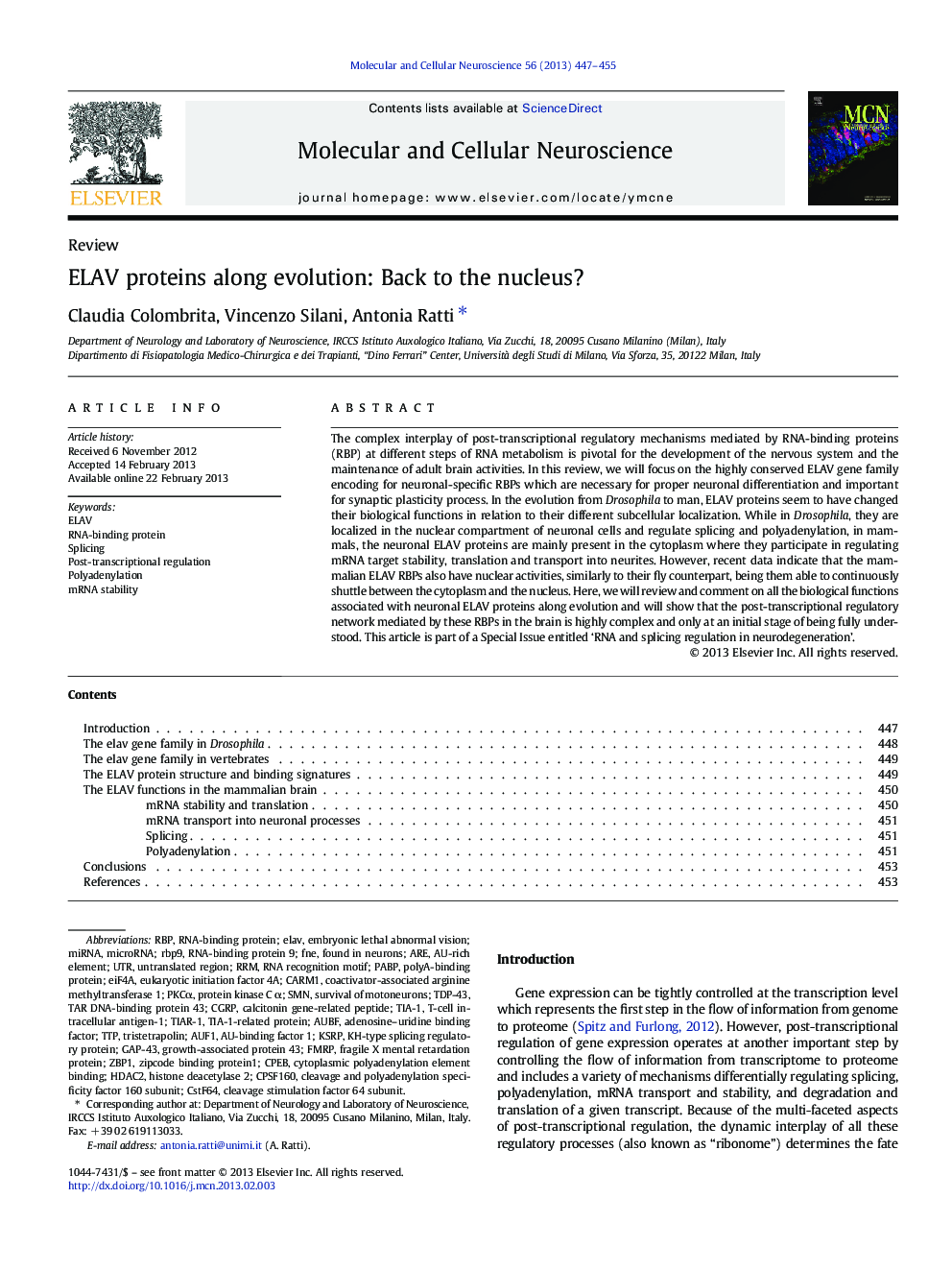| Article ID | Journal | Published Year | Pages | File Type |
|---|---|---|---|---|
| 8478684 | Molecular and Cellular Neuroscience | 2013 | 9 Pages |
Abstract
The complex interplay of post-transcriptional regulatory mechanisms mediated by RNA-binding proteins (RBP) at different steps of RNA metabolism is pivotal for the development of the nervous system and the maintenance of adult brain activities. In this review, we will focus on the highly conserved ELAV gene family encoding for neuronal-specific RBPs which are necessary for proper neuronal differentiation and important for synaptic plasticity process. In the evolution from Drosophila to man, ELAV proteins seem to have changed their biological functions in relation to their different subcellular localization. While in Drosophila, they are localized in the nuclear compartment of neuronal cells and regulate splicing and polyadenylation, in mammals, the neuronal ELAV proteins are mainly present in the cytoplasm where they participate in regulating mRNA target stability, translation and transport into neurites. However, recent data indicate that the mammalian ELAV RBPs also have nuclear activities, similarly to their fly counterpart, being them able to continuously shuttle between the cytoplasm and the nucleus. Here, we will review and comment on all the biological functions associated with neuronal ELAV proteins along evolution and will show that the post-transcriptional regulatory network mediated by these RBPs in the brain is highly complex and only at an initial stage of being fully understood. This article is part of a Special Issue entitled 'RNA and splicing regulation in neurodegeneration'.
Keywords
AUBFAUF1CARM1Coactivator-associated arginine methyltransferase 1TTPPKCαHDAC2Protein kinase C αCPEBELAVRRMTIA-1GAP-43RBPFNET-cell intracellular antigen-1eukaryotic initiation factor 4APolyadenylationCGRPSMNKH-type splicing regulatory proteinZbp1PABPFMRPKSRPTDP-43eIF4ARNA recognition motifmRNA stabilityembryonic lethal abnormal visionAU-rich elementPost-transcriptional regulationUTR یا untranslated regions untranslated regionMicroRNAMiRNAAREHistone deacetylase 2fragile X mental retardation proteintar DNA-binding protein 43RNA-binding proteingrowth-associated protein 43calcitonin gene-related peptideSplicing
Related Topics
Life Sciences
Biochemistry, Genetics and Molecular Biology
Cell Biology
Authors
Claudia Colombrita, Vincenzo Silani, Antonia Ratti,
